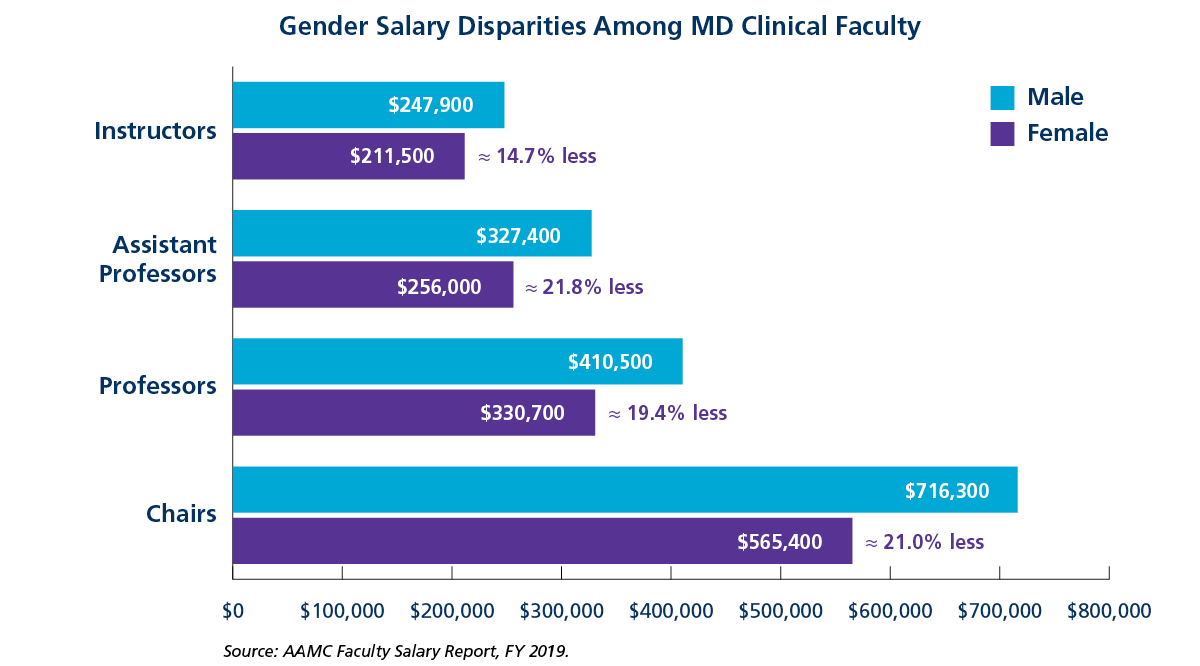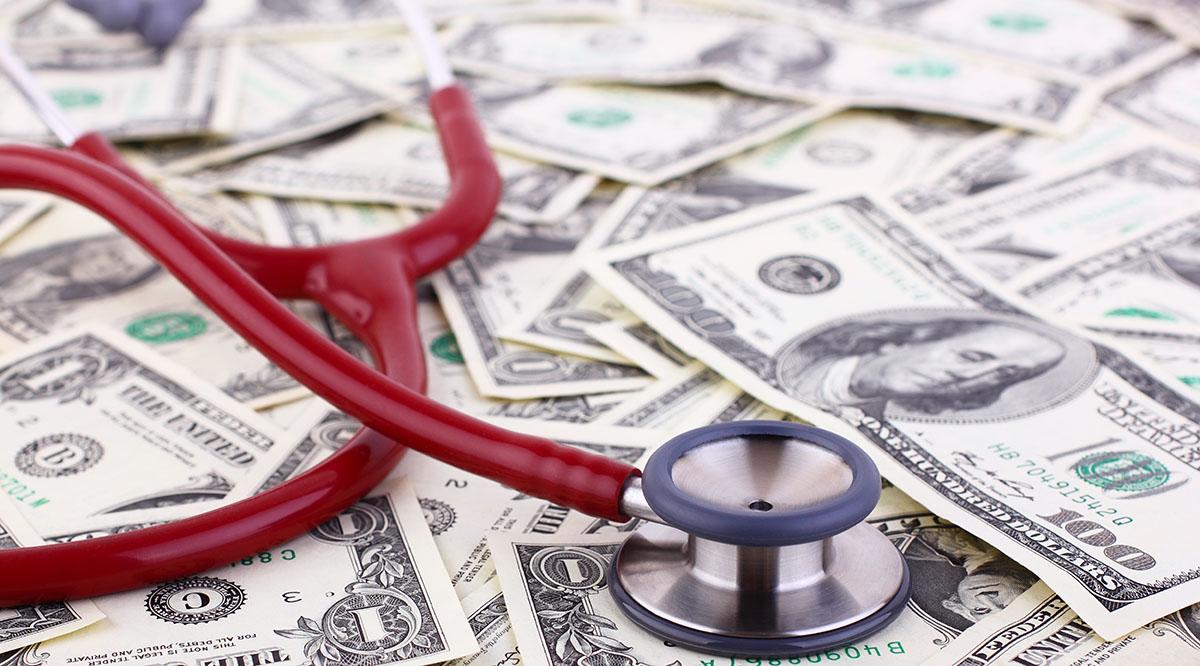Faculty salaries at medical schools increased an average of 2.3% in the last fiscal year, but new data illuminate significant differences in compensation for men and women at equal levels of educational and professional achievement, according to the AAMC Faculty Salary Report FY 2019.
This is the first year that the report breaks down average salaries by gender as part of the AAMC’s gender equity initiative to provide information, resources, and leadership to guide academic medicine in addressing gender-based inequities.
“The AAMC hopes these data will provide the academic medicine community with additional resources for conducting equity studies and promoting sustainable equity in their medical schools and teaching hospitals,” said Stefanie Wisniewski, manager of data operations and services at the AAMC.
The annual AAMC Faculty Salary Survey was administered to 153 accredited medical schools in the United States and received a 99% response rate, with 151 schools participating. The report presents the total compensation for 118,961 full-time faculty in six positions: instructor, assistant professor, associate professor, professor, chief, and chair.
Below are selected findings.
Compensation
The average compensation for all faculty rose 2.3%, from $280,700 in FY18 to $287,100 in FY19.
Total compensation includes fixed salary plus supplemental earnings, such as bonus pay, compensation based on medical practice earnings, and outside earnings like speaking engagements and consulting fees. The vast majority of faculty (92.9%) were eligible to receive supplemental earnings, and about three-quarters of those did.
Gender differences
Among MDs in clinical sciences overall, women’s average salaries are lower than men’s at the instructor level and fall further behind at higher ranks.

For more information about gender equity in academic medicine, see the AAMC Statement on Gender Equity and its tools for Understanding and Addressing Faculty Salary Equity.
Clinical specialties: highs and lows
The mean total compensation for MDs in the clinical sciences rose by 2.3%, from $322,800 in FY18 to $330,100 in FY19.
Highest average compensation
By specialty, the following faculty earned the highest pay. (Combined assistant professor, associate professor, and professor rankings.)
- Neurosurgery.
- Dermatology: Mohs Surgery.
- Thoracic and Cardiovascular Surgery.
- Orthopedic Surgery: Sports Medicine.
- Orthopedic Surgery: General.
- Plastic Surgery.
- OB/GYN: Reproductive Endocrinology.
Lowest average compensation
By specialty, the following faculty earned the lowest pay. (Combined assistant professor, associate professor, and professor rankings.)
- Adolescent Medicine.
- Community Health.
- Endocrinology: Pediatrics.
- Hospital Medicine: Pediatrics.
- Infectious Disease: Pediatrics.
- Nephrology: Pediatrics.
- Psychology: Pediatrics.
- Rheumatology: Pediatrics.
Instructors
Among clinical specialties, seven faculty positions averaged below $150,000. All are instructor positions, and four are in pediatrics:
- Infectious Disease: Medicine.
- Nephrology: Pediatrics.
- Hematology/Oncology: Pediatrics.
- Infectious Disease: Pediatrics.
- Ophthalmology.
- Endocrinology: Pediatrics.
- Community Health.
Notable changes
(Combined assistant professor, associate professor, and professor rankings among faculty with MD or equivalent degrees, in both basic and clinical sciences.)
Largest increases from FY18
- Adolescent Medicine — 7.1%.
- OB/GYN: Reproductive Endocrinology — 6.6%.
- Plastic Surgery — 6.6%.
- Neurosciences — 6.5%.
- Family Medicine: Sports Medicine — 5.4%.
- Neurosurgery — 5.4%.
Largest decreases from FY18
- Bioethics/Medical Humanities — 9.6%.
- Biochemistry — 5.8%.
- Biomedical Informatics — 5.4%.
- Diagnostic Radiology: Interventional — 4.9%.
- Critical/Intensive Care-Medicine — 3.2%.
Public and private schools
Private schools continue to pay more on average than public schools do. Within clinical sciences, among those with MD or equivalent degrees:
Public school salaries at the instructor level were far behind:
- Private — $246,700.
- Public — $192,000.
- Difference — $54,700.
The gap narrowed at the assistant professor level:
- Private — $303,300.
- Public — $288,500.
- Difference — $14,800.
The salary difference crept back up through the ranks of associate professors, professors, and chiefs, with these averages for the latter:
- Private — $472,200.
- Public — $412,600.
- Difference — $59,600.
The gap expanded exponentially at the top for department chairs:
- Private — $823,200.
- Public — $616,200.
- Difference — $207,000.
Other findings
PhDs
Average salary increases for PhDs in 2019 were above the average for faculty overall:
- PhDs in basic sciences saw salaries increase by 2.6%, to $149,400.
- PhDs in clinical sciences saw salaries increase by 2.9%, to $150,100.
Regional differences
Among clinical science MDs, faculty in the Northeast drew the highest average salaries across all positions, while those in the South almost always drew the lowest.
- The average instructor salaries for clinical science MDs ranged from $173,200 in the South to $256,800 in the Northeast.
- The average salaries for clinical science MD chairs ranged from $609,800 in the South to $833,700 in the Northeast.

